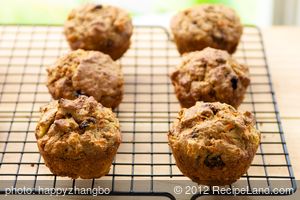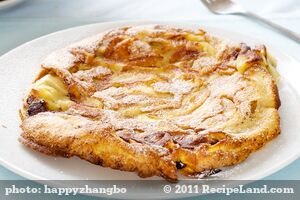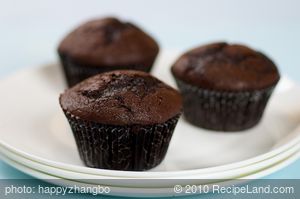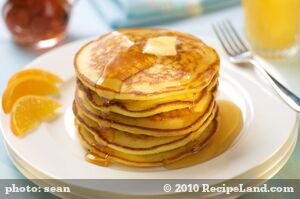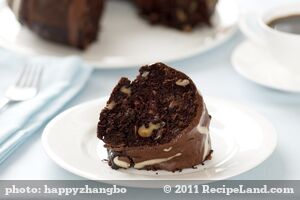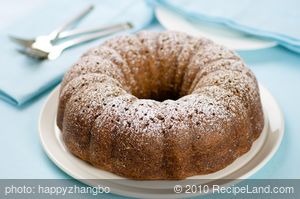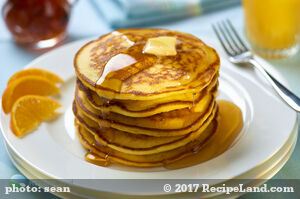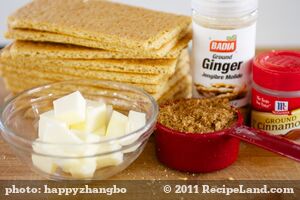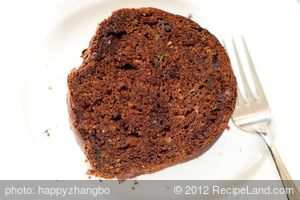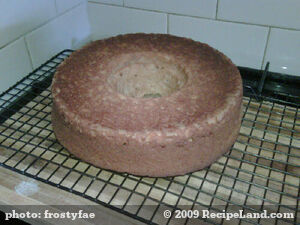1-2-3-4 Cake By James Beard, Chef & Cooking Teacher
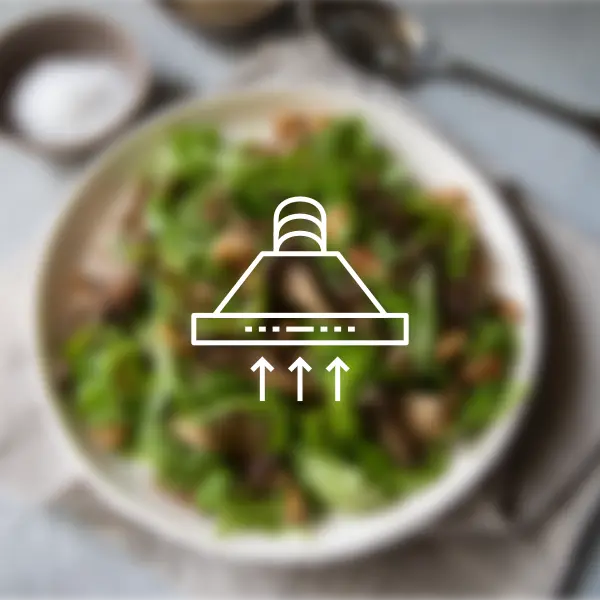
Yield
12 servingsPrep
20 minCook
25 minReady
45 minIngredients
| Amount | Measure | Ingredient | Features |
|---|---|---|---|
| For three 9 by 1/2 inch deep pan | |||
| 1 | tablespoon |
butter
softened |
|
| 2 | tablespoons |
all-purpose flour
|
|
| For the cake | |||
| 3 | cups |
cake flour
|
|
| 4 | teaspoons |
baking powder
|
|
| ½ | teaspoon |
salt
|
|
| 8 | ounces |
butter, unsalted
at room temperature |
|
| 2 | cups |
sugar
granulated |
|
| 4 | medium |
eggs
at room temperature |
|
| 1 | cup |
milk
at room temperature |
|
| 1 ½ | teaspoons |
vanilla extract
|
|
| For the filling and topping | |||
| ¾ | cup |
orange juice
strained |
|
| 2 | tablespoons |
lemon juice
|
|
| ¾ | cup |
sugar
granulated |
|
| 1 | tablespoon |
orange zest
finely grated |
|
Ingredients
| Amount | Measure | Ingredient | Features |
|---|---|---|---|
| For three 9 by 1/2 inch deep pan | |||
| 15 | ml |
butter
softened |
|
| 3E+1 | ml |
all-purpose flour
|
|
| For the cake | |||
| 7.1E+2 | ml |
cake flour
|
|
| 2E+1 | ml |
baking powder
|
|
| 2.5 | ml |
salt
|
|
| 231.2 | ml/g |
butter, unsalted
at room temperature |
|
| 473 | ml |
sugar
granulated |
|
| 4 | medium |
eggs
at room temperature |
|
| 237 | ml |
milk
at room temperature |
|
| 7.5 | ml |
vanilla extract
|
|
| For the filling and topping | |||
| 177 | ml |
orange juice
strained |
|
| 3E+1 | ml |
lemon juice
|
|
| 177 | ml |
sugar
granulated |
|
| 15 | ml |
orange zest
finely grated |
|
Directions
Uses three 9x½ inch deep cake pans.
Makes: One 3-layered cake; Serves 12 depending on thickness of slices.
*Note:1. If you can't find cake flour, the same amount of All-purpose flour can be substituted.
- Directions *
Preheat the oven to 350℉ (180℃).
Using your hands, butter the bottom and sides of all 3 layer-cake pans with softened butter; sprinkle flour inside, then shake pans so you get a thin coating on the butter.
Tip out any excess! Now to sift your flour.
Lay a large piece of waxed paper on a board, put a dry measuring cup in the center, hold a sifter directly over it, scoop cake flour from the package into the sifter, and sift the flour directly into the cup.
When the cup is full, draw the back of a knife blade lightly across the top of the cup (don't shake the flour down, or it will become dense) and then tip the measured flour into a mixing bowl.
Repeat with the other 2 cups of flour (you can put any flour that spilled onto the waxed paper back in the sifter).
When you have 3 cups of sifted flour in the bowl, put the baking powder and salt in the sifter, holding it over the mixing bowl, and sift it over the flour.
Then, still using your hands, mix the baking powder and salt lightly with the flour.
Next, put the butter into a second, large mixing bowl.
If it is very firm (it shouldn't be, if you have left it out of the fridge), squeeze it through your fingers until it softens up.
When it is soft enough to work, form your right hand into a big fork, as it were, and cream the butter.
This means that you beat it firmly and quickly with your hand, beating and aerating it, until it becomes light, creamy and fluffy.
Then whirl your fingers around like a whisk so the butter forms a circle in the bowl.
Gradually cream the 2 cups of sugar into the butter with the same fork-like motion, beating until the mixture is very light and fluffy.
As the sugar blends in it will change the color of the butter to a much lighter color, almost white.
Now wash and dry your hands thoroughly.
Separate the eggs as you would for a souffle', letting the whites slip though slightly parted fingers into a small bowl and dropping the yokes into a second, larger bowl.
Beat the yokes for a few minutes with a whisk until they are well blended.
Then, again with your hand, beat them very thoroughly into the butter-sugar mixture.
Now beat in the milk alternately with the sifted flour -- first one, then the other -- this time keeping your fingers close together as if your hand were a wooden spatula.
Beat, beat, beat until the batter is well mixed, then add the vanilla and beat that in for 1 or 2 minutes.
Put the egg whites in your beating bowl and beat them with a large whisk or and electric hand beater until they mount first to soft, drooping peaks and then to firm, glossy peaks.
Do not over beat so that they are stiff and dry! Tip the beaten whites onto the cake batter and fold them in with your hand.
Slightly cup your hand and use the side like a spatula to cut down through the whites and batter to the bottom of the bowl and then flop them over with your cupped hand, rotating the bowl with your other hand as you do so - exactly the technique used when folding egg whites into a souffle mixture with a rubber spatula.
Repeat this very lightly and quickly until the whites and batter are thoroughly folded and blended. Once you have mastered this hand technique you can use it for souffles.
Again using your hand like a spatula, pour and scrape the batter into three prepared pans, dividing it equally between them. Give the filled pans a little knock on the countertop to level the batter. Put the 3 pans in the center of the oven, or, if you have to use more than 1 rack, stagger them on the 2 middle racks of the oven so they do not overlap.
Bake for 25 minutes, then touch the center of each cake lightly with your fingertip. If it springs back, it is done.
Remove the pans and put them on wire cake rakes to cool for a few minutes, then loosen the layers by running the flat of a knife blade around the sides of the pans, put a rack on top of each pan, and invert so the cake comes out onto the rack, top side down. Then reverse the layers so they are top side up.
For filling and icing, SEE: 1-2-3-4 Filling and Icing recipe.

